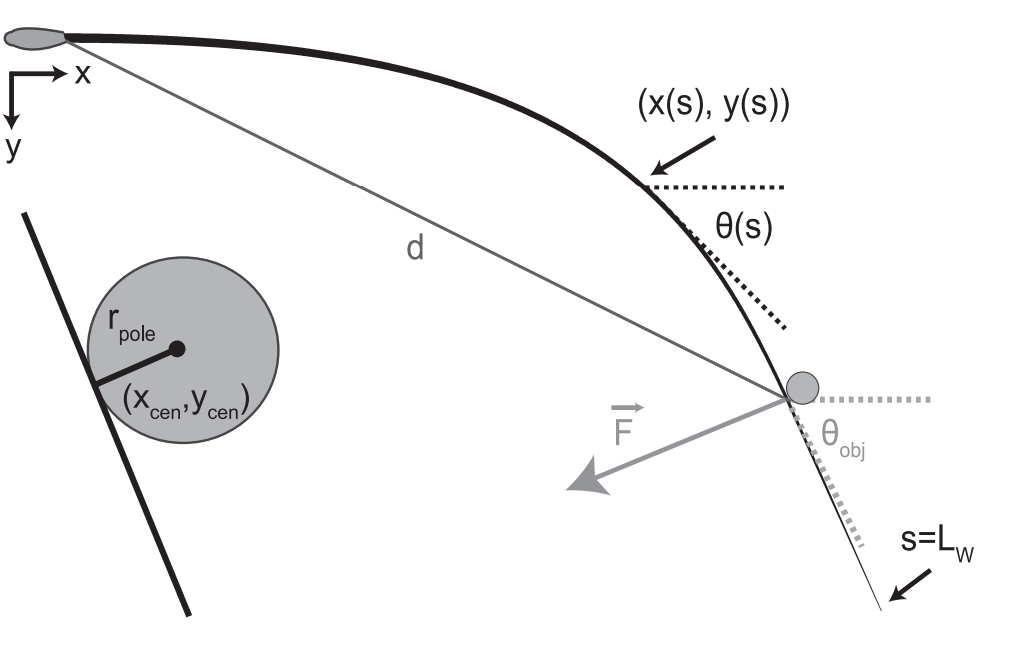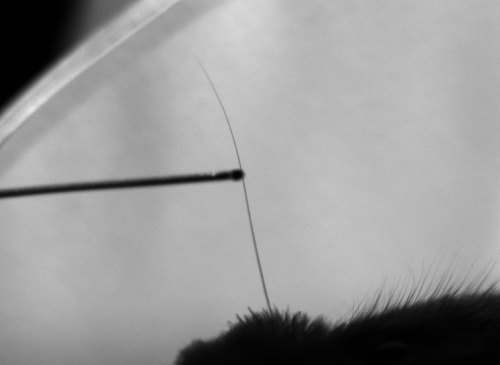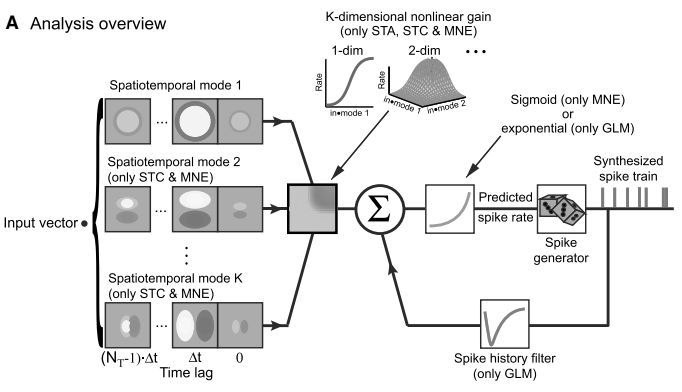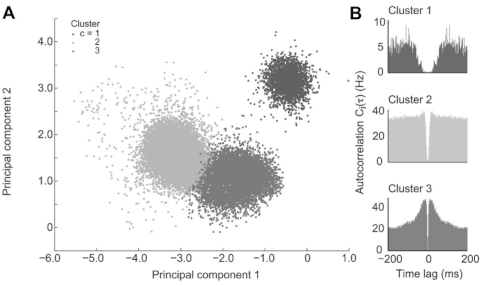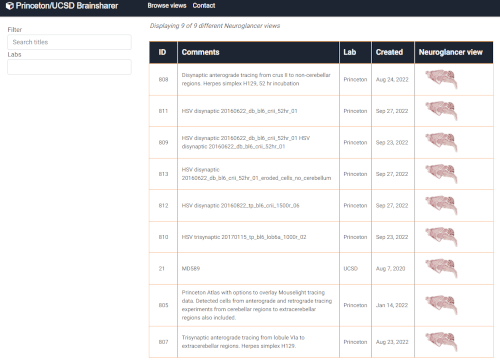Vibrissa Oscillator (vIRt)
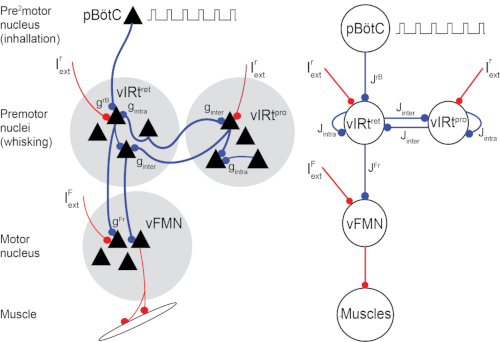
This model provides a computational framework to support longstanding observations of concurrent autonomous and driven rhythmic motor actions and how the interaction of the Central whisking oscillator Breathing oscillator dynamics can be studied using conductance- and rate-based modeling. The github site includes computer programs and scripts for generating figures from the article:
David Golomb, Jeffrey D. Moore, Arash Fassihi, Jun Takatoh, Vincent Prevosto, Fan Wang and David Kleinfeld, Theory of hierarchically-organized neuronal oscillator dynamics that mediate rodent rhythmic whisking.
Neuron, (2022) 110:3833-3851.
Software needed: julia compiler, XMGrace LaTeX
DOI: 10.1016/j.neuron.2022.08.020
Contact: Professor David Golomb
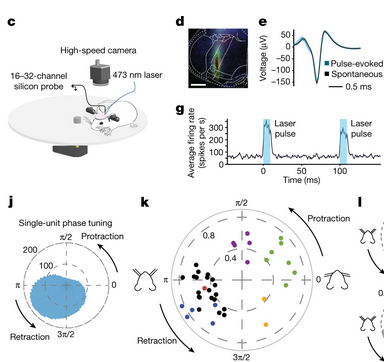
This study identifies the neural circuit responsible for rhythmic whisker movements in rodents, pinpointing parvalbumin-expressing inhibitory neurons in the brainstem's vIRt region. These neurons form a recurrent inhibitory network that generates rhythmic activity through network dynamics rather than intrinsic properties. Disrupting this network abolishes regular whisking, highlighting the central role of synaptic inhibition in rhythm generation.
Jun Takatoh, Vincent Prevosto, P. M. Thompson, Jinghao Lu, Leeyup Chung, Andrew Harrahill, Shun Li, Shengli Zhao, Zhigang He, David Golomb, David Kleinfeld and Fan Wang , The whisking oscillator circuit.
Nature, (2022) 609:560–568.
DOI: 10.1038/s41586-022-05144-8
Contact: Vincent Prevosto
